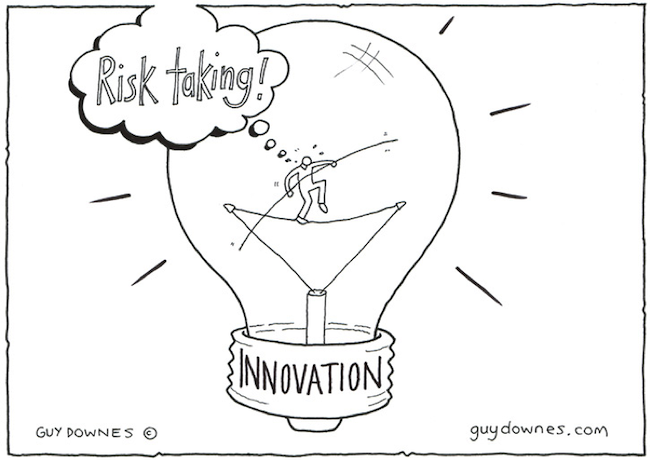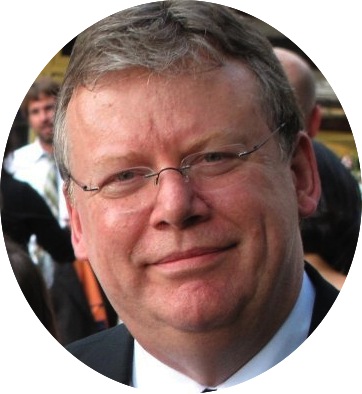INNOVATION AND RISK: AN UNCOMFORTABLE BALANCE
By: Jac van Beek
Fall 2017 Issue
We live in a world that places a high premium on innovation as the fuel of growth and wealth creation, and increasingly as a prerequisite for survival. It is also essential for health, well-being, security, and resilience in a topsy-turvy world that advances at a very fast pace. An emerging conundrum for many sectors is: how to manage risks in an accelerated world that demands rapid innovation?
What has happened to Innovation?
Historically, innovation has been portrayed as a singular, linear process – from concept to research to product launch. Integral to this portrait is a controlled series of interventions to assess the likelihood of success and the controlled release of investment funding to continue or cease development. Recently, this has expanded to include social, organizational, social enterprise innovation, business modelling, and design often driven by advances in technological platforms.
It is certainly not a new phenomenon as historians and economists remind us of disruptions in 15th century Spain, structural changes that emerged during the protracted depression of 1873-96, and the introduction of new platforms such as the car, railways, electricity, and the rapid opening up of the American West. All were accompanied by transformative and widespread business innovation: new industries, the scale of existing industries, dramatic shifts in the sources of and the concentration of wealth, and the inevitable re-structuring of society.
We are in the midst of a disruptive period yet again – perhaps on an unfamiliar scale. A confluence of several technologies made possible a number of innovations that dramatically shaped our current society and economy – and so much of it happened in 2007. The following all emerged around the time of our last financial crisis – perhaps the catalyst for an unprecedented convergence of many different technologies: the iPhone, Hadoop (to expand storage capacity, making big data possible for all), GitHub (providing an open source platform for software development), Facebook, Twitter, Change.org (collaboration and innovation), Android (open standards platform for devices), Kindle (Amazon), Airbnb (Uber was launched in 2009), Watson (a cognitive computer that combined machine learning and artificial intelligence), Non-silicon materials first used in microchips (faster and more energy efficient chips), plus Cleantech accelerated, and DNA sequencing costs plummeted.
The significance of these innovations is dynamic as advanced robotics, artificial intelligence, networks (Internet of Things), advanced manufacturing, and collaborative connected platforms continuously disrupt and re-shape the basic architecture of industries at an accelerated pace. The marketplace rewards organizations that take on strategic, high risk innovations. Concurrently as we reach for the unknown and unconventional, we have lost our capacity to predict and anticipate, we no longer have a value system that allows us to discern between right and wrong - in short, we have moved beyond our capacity to adapt (see an interesting discussion of our state affairs by Thomas Friedman).
As organizations struggle to adapt, it is perhaps instructive to look at leading edge research organizations as they often struggle with organizational issues and potential adaptations early, or at least before others, because they have fluid resources, are driven to perform if they are to be funded, and are often shaped by the very innovation that they are developing. One observation about such organizations is that they shift their adaptive design principles to expand their capacity (see what Joi Ito and Jeff Howe have to say about designing effective organizations under rapid change).
We seem to be moving from traditional approach to organization design to an approach based on asymmetrical business impacts (the effect of social media on public perceptions and consumer decision-making), complex business conditions, and a high degree of uncertainty: compliance to disobedience, push to pull, maps to compasses, authority to emergence, education to learning (Peter Senge helped us start down this approach to capability thinking), strength to resilience (see Nicholas Teleb’s take), safety to risk, theory to practice, and objects to systems.
How is it affecting risk assessment?
This extraordinary shift in thinking is possible because of a lower cost of innovation, fast and inexpensive communications, and an enhanced ability to create community. Ambiguity has become good practice and lower costs of experimentation and failure has reduced business risk.
The same technologies that changed the business landscape have been applied to risk assessment. Mathematical models are increasingly used to capture variables that related to outcomes. While often built on intuitive mental models, they are a good approximation of the various forces at play when changes occur – in the business itself or in the external environment impacting the business. A recent report on risk by Deloitte (The Future of Risk Report, 2016) suggests that many organizations are able to process continual input at rapid rates to allow for constant adjustment and course correction.
Solid industry practices include:
- Celebrate success and failure (a greater tolerance for risk) by creating a risk governance approach that bridges finance and operations;
- Build a portfolio of early innovation experiments that are similar to futures options;
- Shorten learning cycles, recognize failures early and make timely course corrections.
General approaches seem to range from development of risk frameworks (Robert Kaplan is one proponent), to community development (Tom Friedman sees this as a way to solve complex issues and thus working through a series of anticipated risks), to design thinking (collaborative problem-solving), to high throughput data analysis with continuous adjustment (advocated by Deloitte with the proviso that it only works with qualified users), to building risk into organizational culture (changing risky behaviours and monitoring high risk individuals).
Acceleration of innovation, and integrating it into everyday business practice, obviously increases the possibility of business and related risks; however, it is the price of admission in business competition today. It also makes possible the rewards of success.
Segregating innovation and managing the process from idea generation to commercialization or adoption is no longer possible. Consequently, tolerance for risk and approach to risk management has had to change or is changing rapidly. Ongoing efforts to bridge risk management are critical for investors and stakeholders, creating confidence that innovation bets are well-placed and that the inherent risks of innovation are being well-managed.
Jac van Beek is the CEO of the Canadian Association of Management Consultants (CMC-Canada). He brings extensive leadership experiences in strategic and operational leadership as well as new venture and initiative development and implementation throughout his 35-year career spanning the management consulting, education, and research funding and management sectors.


